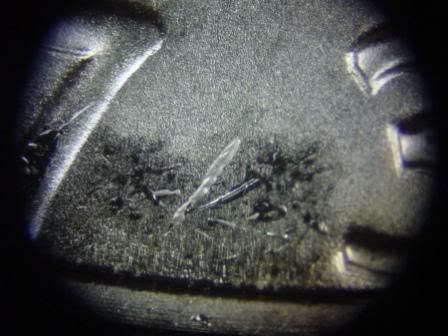Question on struck through errors
Collapse
X
-
Question on struck through errors
I'm wondering whether there's a way to differentiate off the face of the coin whether the error occurred by virtue of the debris having been sandwiched in between the planchet and one of the dies or by virtue of the debris having rested within the circumference of the blank when the blank was punched out of the strip.Tags: None
-
-
I think it would depend upon the severity of the strike through since the minting process itself wipes out a lot of flaws on the planchets surface through metal movement. Some get left behind as exampled by this weakly struck 1973-S IKE dollar. It's a very lightweight coin and possibly thinner than a normal 40% Silver IKE. (23.1 grams compared to a 24.6 grams target weight)


Simply looking at the strike through, and I'm referring to wires/paper clips/screws/etc., should reveal whether it occured during the blanking phase or minting pahse of production.
For proof coins, I would expect that a struck through planchet would get rejected but then lately, minor strike throughs on proof coins seems to be comon place.Lee Lydston
-
-
On clad coins, the clad layer will split if it's a rolled-in fragment. It won't split if it's a struck-in fragment. On solid-alloy coins, a determination is more difficult. There are at least five routes by which foreign matter gets embedded in a coin.Mike Diamond. Error coin writer and researcher.
Comment
-

Comment